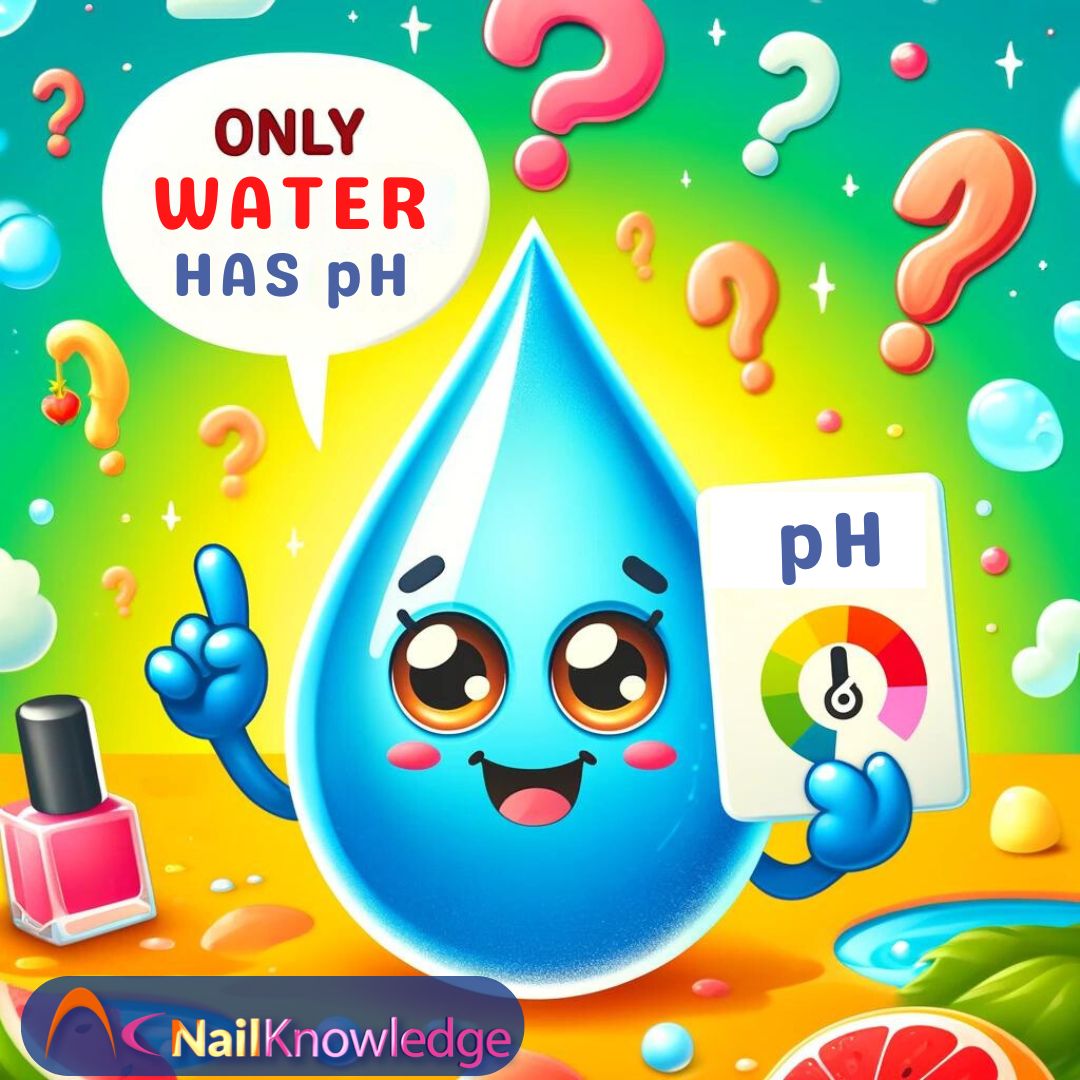Let’s clear things up!

Exploring the Role of pH and UV in Nail Adhesion Promoters
When nail plate adhesion promoters are mixed with water, it is their effect on the water’s pH that is measured. When this is done the water can become alkaline, acidic or neutral. HEMA is well known for its adhesion promoting ability produces a neutral pH in water. Other adhesion promoters can make the water alkaline, some acidic. So, clearly pH does not determine if something is an adhesion promoter.
Yes, in some cases pH can play a small role, but so does UV. UV causes polymerization of the gel which certainly promotes adhesion, but UV has no pH. So, obviously, there is much more to adhesion, than pH.
Understanding the Chemistry of UV Gel Adhesion to Nail Plates
Adhesion is caused by the ingredients in the UV gel. Many ingredients are repelled by the surface of the nail plate. However, some are strongly attracted to the nail plate surface. Why? These ingredients create chemical bonds with the nail plate surface, which is the reason for their attraction. The chemical bonds with the nail plate surface is what causes attraction and adhesion, not pH.
There are three main types of bonds, which I’ve listed in order of their adhesive strength.
1. Hydrogen bonds are the weakest, but many of them can work together to create a significant amount of adhesion strength. However, they can be easily disrupted by things like heat, moisture, and mechanical stress. These bonds are constantly changing positions, so they tend not to be very strong, but are still highly influential and always play a useful role.
2. Ionic bonds are stronger than hydrogen bonds and form by an attraction between opposite positive and negative charges on the ingredient and the nail plate’s surface. The strength of these can be influenced pH, in this way pH plays a small indirect role. These bonds, like hydrogen bonds can still be reversible.
3. Covalent bonds are the strongest of the three types of bonds by far. Covalent bonds are highly stable and resistant to external factors, providing the most durable and long-lasting adhesion. They are generally considered irreversible since they require significant energy to break them.
Factors Influencing Nail Product Adhesion
Other factors also affect adhesion, such as how well the product can flow into small nooks and crannies, which is a property called “wetting”. This important property is improved by properly cleaning the nail plate. So, you can see many things, including the cleanliness and condition of the nail plate, affect adhesion. A well-designed nail product will often use a combination of these bonds to achieve the best possible adhesion.
The Risks of Acidic Gel Bases in Nail Products
What about the so-called “acidic gel bases?
Some of these contain acrylic acid. This ingredient uses all three of these types of bonds to improve adhesion, even so I do NOT recommend using products that contain this ingredient. Is a strong skin irritant and likely is responsible for many allergic reactions in the nail industry. In fact, I estimate it is more likely to cause skin problems than HEMA.
Beware! Avoid skin contact and never use this on a broken or cracked nail plate.


